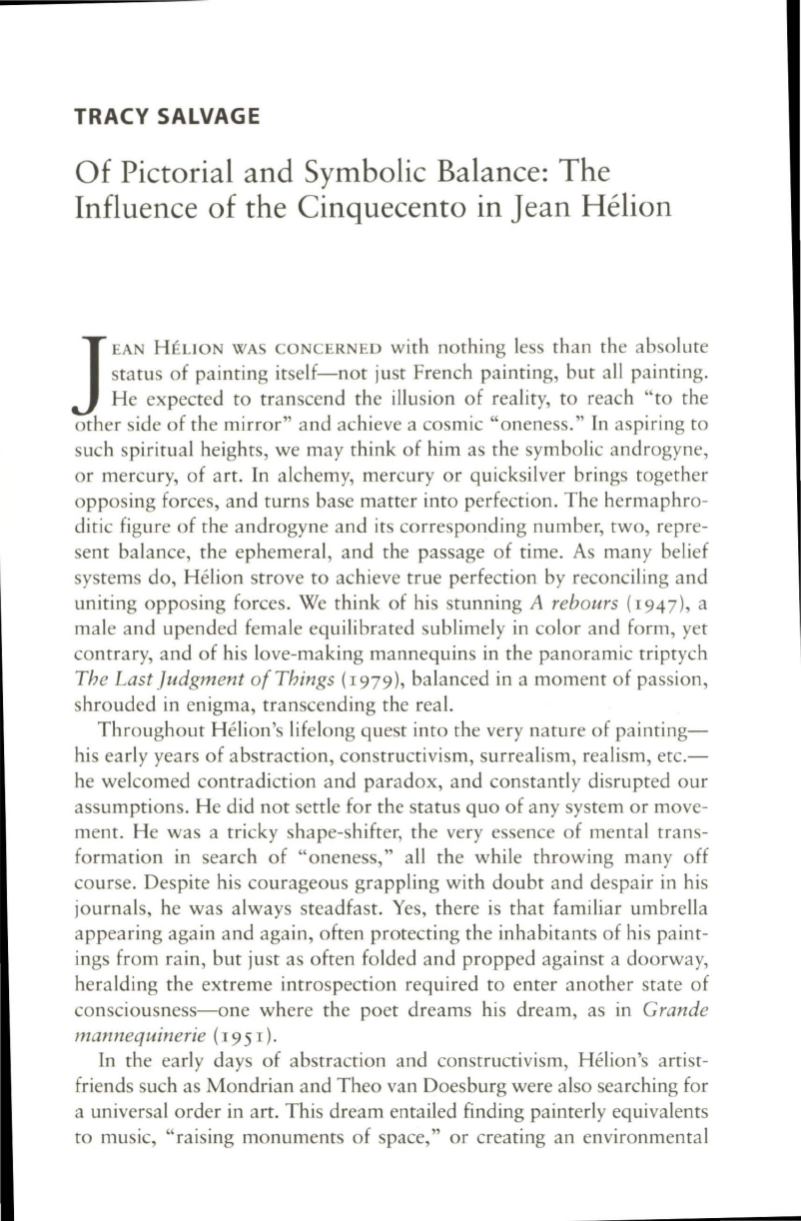
TRACY SALVAGE
Of Pictorial and Symbolic Balance: The
Influence of the Cinquecento in Jean Helion
J
EAN HELION WAS CONCERNED with nothing less than the absolute
status of painting itself-not just French painting, but all painting.
He expected to transcend the illusion of reality, to reach "to the
other side of the mirror" and achieve a cosmic "oneness." In aspiring to
such spiritual heights, we may think of him as the symbolic androgyne,
or mercury, of art. In alchemy, mercury or quicksilver brings together
opposing forces, and turns base matter into perfection. The hermaphro–
ditic figure of the androgyne and its corresponding number, two, repre–
sent balance, the ephemeral, and the passage of time. As many belief
systems do, Helion strove to achieve true perfection by reconciling and
uniting opposing forces . We think of his stunning
A rebours
(1947),
a
male and upended female equilibrated sublimely in color and form, yet
contrary, and of his love-making mannequins in the panoramic triptych
The Last Judgment of Things
(1979),
balanced in a moment of passion,
shrouded in enigma, transcending the real.
Throughout Helion's lifelong quest into the very nature of painting–
his early years of abstraction, constructivism, surrealism, realism, etc.–
he welcomed contradiction and paradox, and constantly disrupted our
assumptions. He did not settle for the status quo of any system or move–
ment. He was a tricky shape-shifter, the very essence of mental trans–
formation in search of "oneness," all the while throwing many off
course. Despite his courageous grappling with doubt and despair in his
journals, he was always steadfast. Yes, there is that familiar umbrella
appearing again and again, often protecting the inhabitants of his paint–
ings from rain, but just as often fo lded and propped against a doorway,
heralding the extreme introspection required to enter another state of
consciousness-one where the poet dreams his dream, as in
Grande
mannequinerie
(195
I).
In the early days of abstraction and constructivism, Helion's artist–
friends such as Mondrian and Theo van Doesburg were also searching for
a universal order in art. This dream entailed finding painterly equivalents
to music, "raising monuments of space," or creating an environmental


